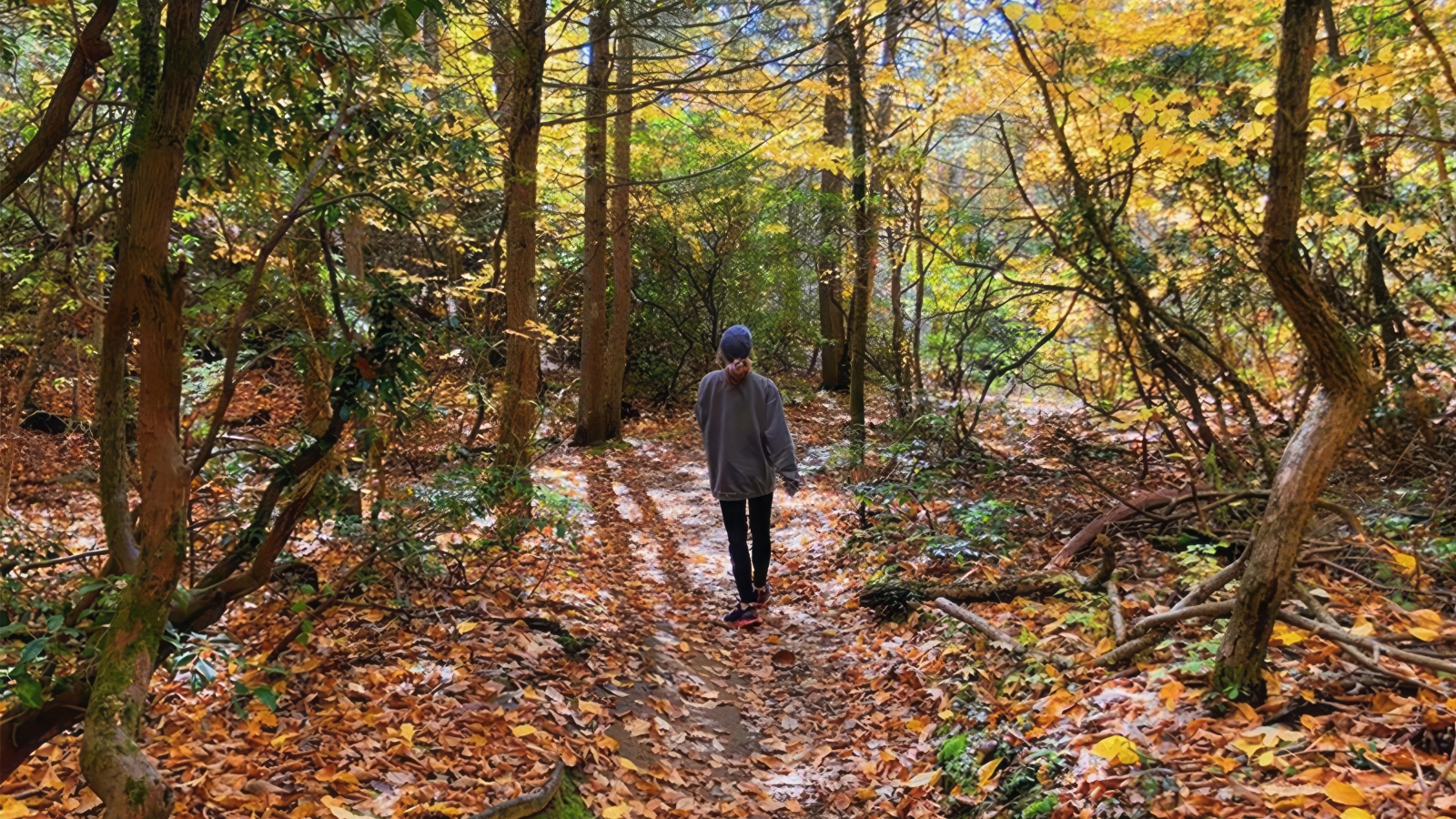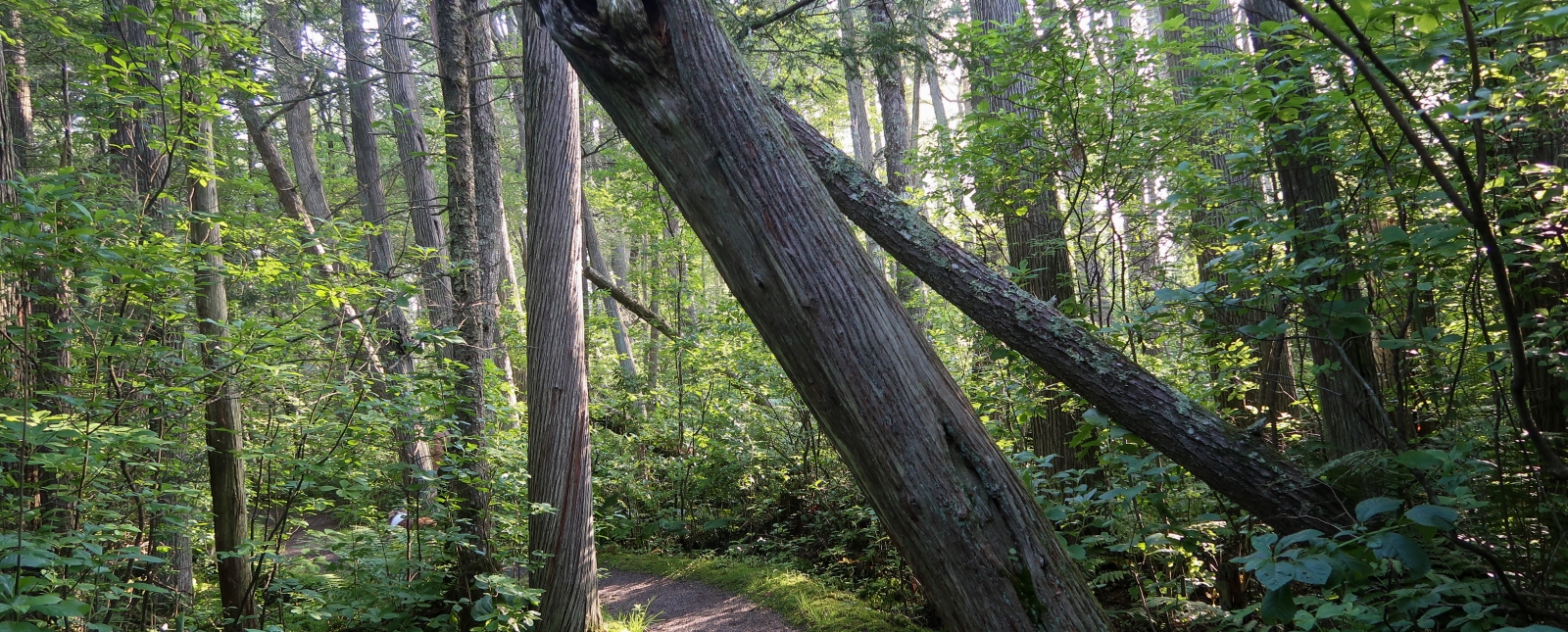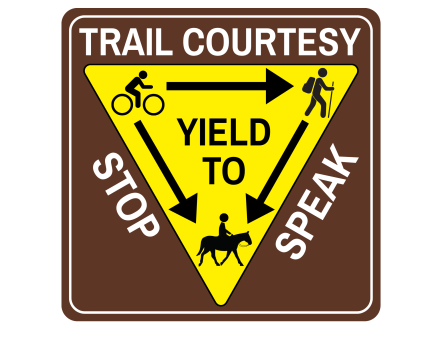
Exploring Connecticut
With over 2,000 miles of multi-use trails, it’s easy to explore Connecticut’s varied landscape.
Whether you’re taking a breezy coastal bike ride or hiking through Connecticut’s colorful fall foliage, familiarizing yourself with trail etiquette is one of the simplest ways to foster positive experiences on the trail.
Continue scrolling to learn more about our guidelines to keep your next excursion safe and fun.

General Guidelines for All Trail Users
- Always let others know where you are and when you expect to return.
- Be aware where hunting is allowed and if hunting season is open. Wear bright orange for extra protection.
- Remain on trails that are blazed.
- Park in designated areas only.
- Keep your dogs on a leash.
- Respect private property - when you are leaving State Land you may no longer have permission to recreate.
- Plan your route! View a trail map in advance (Maps may also be found at trail heads).
- Stay clear of active forest management. Roads and trails may be temporarily closed to accommodate tree thinning activities.
Leave No Trace
Be conscious of your impact to native ecosystems, wildlife, and other park visitors by following Leave No Trace principles.
- Plan ahead and prepare. In advance of your trip, learn about park regulations, check out maps, and be ready for unexpected emergencies or inclement weather.
- Travel and camp on durable surfaces. Stay on maintained trails and designated campsites.
- Dispose of waste properly. Dispose of any waste, leftover food, and litter in trash receptacles. None available? Pack it in, then pack it out.
- Leave what you find. Take home photos and memories, but leave behind rocks, plants, and anything else you find at the park for future visitors to enjoy.
- Minimize campfire impacts. Where fires are permitted, use established fire rings, keep your blaze small, and put out campfires completely. Use locally sourced firewood only to limit invasive species, available for purchase at many of our campgrounds.
- Respect wildlife. Protect wildlife and stay safe. Keep your distance and don’t disturb or feed wildlife.
- Be considerate of other visitors. Share the trail, control pets, avoid making excessive noise, and respect other visitors to help everyone have a positive experience.
If you notice something that could be a danger to you or other trail users, report it to the park or forest office or to our central offices at 860-424-3200 or deep.stateparks@ct.gov.
For emergencies or to report illegal or criminal activity actively occurring on DEEP property, please call our State Environmental Conservation (EnCon) Police at 860-424-3333.
Pet Etiquette
Sharing the trail with our four-legged friends is one of the great ways we can experience the outdoors and create lasting memories. Pet owners can ensure a fun and safe trip for their pet and themselves by following established guidelines.
- Plan your visit. Pets on a leash are permitted in most state parks and forests, but are not allowed in buildings, swimming areas, or state park campgrounds. Check individual park pages for more specific information.
- Use a leash. Pets should be on a leash at all times, never extending more than seven (7) feet. Ensure you have full control of your pet with their leash or harness, especially when passing others.
- Respect wildlife. Keep pets away from native wildlife as they could startle or provoke animals, resulting in injury. Keep your pets and our wildlife safe from giving and getting diseases by maintaining a respectful distance.
- Pick up after your pet. Whether you’re traveling with a cat, dog, horse, or anything in between, be sure to remove and properly dispose of pet waste. Do not leave doggie bags tied to trees, on roadsides, or on the trail.
- Know your pet. Ensure your pet has the physical capacity to complete the trail you’ve chosen. Make sure they are up to date on vaccinations as fleas, ticks, and other waterborne pathogens can cause serious illness.
- Be considerate of others. Knowing the temperament of your animal is important, especially if they are reactive in new spaces or with new people. Be courteous to other trail users by creating the appropriate amount of space to pass in or giving a friendly warning if you are traveling with a reactive animal. Consider less populated trails (based on location, time of day, or trail use type) if you are traveling with a pet who could be easily stressed by their environment.
Safe Speeds
Trails are shared by hikers, cyclists, and horse-riders alike. With multiple forms of activity happening all at once, it’s important to be mindful of one’s speed.
Maintaining a safe speed (a speed in which you are in full control of yourself and your equipment) allows you to have a faster reaction time when faced with an unexpected or unfamiliar encounter. This decreases your chance of injuring yourself or others.
Using safe speeds also creates a more open, inviting environment by showing respect for other trail users— especially children, seniors, or those with disabilities that may prevent them from being able quickly move out of the way.
Always abide by trail speed limits when they are posted.
Right of Way
Keep Right, Pass Left
Predictability keeps us safe. Just like on the highway, trail users should travel on the right side and pass on the left.
Calling out a friendly greeting when preparing to pass someone can alert them to your presence without disturbing the pace of either party. If you’re traveling in a group, the person in front should indicate this to whoever they are passing. This communication helps prevent potential collisions and builds community with fellow trail users.
Standing Still? Stand Aside
How you stop is just as important as how you go in maintaining the flow of traffic on a trail. When stopping, whether to rest, to take photos, or even to let another group by, make sure to move both you and your belongings completely off the trail. Bicycles, backpacks, strollers, and other items should be clear of the trail. If you are traveling with pets, ensure you have control of their leash or harness. See Pet Etiquette for more information.
Be courteous by taking breaks in areas with extra passing room so others do not have to make sudden stops or weave around you. Step enough off the trail to clear space but not so much that you risk damaging vegetation or wildlife habitats. If you are traveling in a group or with children, encourage those around you to do the same.
Remember that modeling the proper etiquette can help others to also become mindful trail users.
Hikers, Bikers, and Equestrians… Oh My!
It can be difficult to make split-second decisions about who has the right of way while on the trail. To avoid confusion, users should follow established guidelines to make our trails as safe as possible. When in doubt, remember that generally, the less maneuverable party has the right of way. This means:
-
Hikers yield to equestrians.
-
Bikers yield to hikers and equestrians.
-
Equestrians yield to other equestrians going uphill.
As a Hiker
-
Hikers yield to equestrians and other pack animals.
-
Hikers going uphill should yield to those traveling downhill.
-
Single hikers should step aside to allow groups to pass.
-
Groups of hikers should travel in a single file, not taking up more than half of the given trail space and ensuring there is room for others to pass.
-
As a Biker
-
Cyclists yield to hikers, horses, and uphill traffic. Some hikers may give cyclists travelling at higher speeds the right of way, but cyclists shouldn’t operate under this assumption.
-
Downhill cyclists yield to uphill cyclists.
-
Always follow posted signs about one-ways, end of trail use, or other terrain changes.
Encounters with Equestrians
Cyclists and hikers should always yield to equestrians on horseback. Because of a horse’s size, unpredictability, and pace, it is more difficult for them to maneuver within the trail than others. If you encounter a horse, remember to STOP, SPEAK, and STAND BACK.

STOP: Horses are prey animals and may be easily spooked by foreign sights, sounds, or smells. They have natural "flight” survival instincts and prefer to move their feet towards an exit route. People who encounter horses should remain stopped until the animal has completely passed them.
SPEAK: Announcing your presence can help horses identify you as a person as well as your location. Try using a friendly greeting in a neutral tone when you notice an equestrian who may need to pass.
STAND BACK: Clear a path for passing by stepping to the downhill side of the trail. A spooked horse generally likes to move uphill, so stepping to the downhill side ensures the safety of both parties. Maintain clear sight lines with the horse and equestrian. Try not to step behind trees or vegetation as this may cause a horse to mistake you for a predator.
Please contain children, dogs, and/or other equipment. Avoid sudden movements or loud noises as riders pass. Once the rider and animal have safely passed (about a 25-foot distance), you may return to the trail.
For more information on equestrian trail use and etiquette: Equine Land Conservation Resource.
Trail Building
The mission of DEEP and state parks is to conserve, improve, and protect Connecticut's natural resources and the environment. We have multiple bureaus working together to ensure this mission is at the forefront of decision making.
While we value providing outdoor recreational spaces for the public, please do not try to expand those spaces on your own. Trail building is strictly prohibited on Connecticut state property without formal written approval.
Careful planning and management, with consideration for environmental impact, wildlife habitats, land quality, and property boundaries, are vital to our trail plans and the safety of all users.
To request permission to put in a new trail, contact DEEP’s Trails Coordinator at 860-424-3938 or deep.cttrails@ct.gov. For permission to perform trail maintenance, contact the Park Supervisor.
For more information and links related to Connecticut's more than 2,000 mikes of multi-use trails and bike paths, please visit our Recreational Trails webpage.



